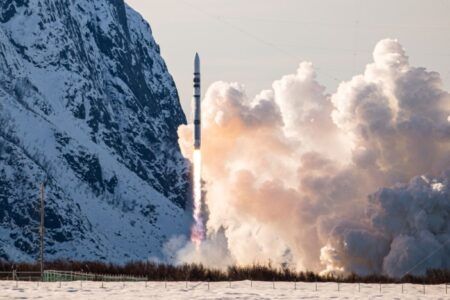During the couple of months since VSS Unity’s last flight, Virgin Galactic’s teams have been focusing their efforts on a long list of ground-based test and installation activities. With those successfully completed, it was time to get VSS Unity back into its natural environment and so, after an early start for the team, VMS Eve and VSS Unity took to the skies again on August 4, at 8:58 local time.
This was Unity’s sixth glide test and essentially a dry run for rocket-powered flights. VMS Eve was piloted by Nicola Pecile and Mike Masucci with flight test engineer Dustin Mosher. Pilots Dave Mackay and CJ Sturckow were at Unity’s controls with a test card which kept them fully occupied as the speed and load envelope was expanded; the vehicle was put into the feathered reentry configuration, and flying was evaluated with an increased weight and rearward shift in the center-of-gravity for landing.
A major first achieved during the test was that with the exception of the rocket motor fuel grain, called the CTN (case throat nozzle), the spacecraft was flown with all the spaceship’s principle propulsion components on board and live.
This meant that Unity took off with its forward pressurant tank loaded with helium and, for the first time, its centrally positioned main oxidizer tank fully charged with nitrous oxide. In a repeat of the previous flight, Unity also carried a ballast tank in the rear fuselage filled with 1000 lb of water to simulate the weight and positioning of the CTN.
As planned, the pilots tested the venting of the nitrous tank while still mounted on the carrier aircraft. The procedure proceeded smoothly, as Eve and Unity climbed past 40,000ft (12,192m) and approached the drop point. After a clean separation from Eve and an approach-to-stall test, Unity’s tail-booms were raised into their re-entry position for the second time in flight.
Once back into the normal glide configuration, the pilots used the descent to execute the remaining test points, including a high-g pull-up maneuver and bank-to-bank rolls. Unlike the previous glide test, the water ballast in the rear tank was not jettisoned, allowing us to test the spaceship’s performance with a heavier landing weight and a center-of-gravity toward the back of the vehicle.
Chief pilot David Mackay said, “We are really pleased with what we saw. We collected hundreds of gigabytes of data for us to review, and from the pilots’ point of view, it felt really wonderful.”
August 9, 2017




